‘Renewables are the cheapest form of new energy.’ – Chris Bowen
A return to typical Queensland summer conditions this month has seen large electricity consumers paid to use less and the electricity market operator (AEMO) scrambling to balance the grid and prevent blackouts.
Yet feckless politicians continue to erode the future prosperity of Australians by ensuring energy costs continue to increase; despite there being more raw energy in oil, coal, gas, and uranium available than ever before in human history.
We consumers are repeatedly told that wind and solar are ‘the cheapest form of new energy’, when in fact, the cost of electricity is increasing in parallel to the rise of renewables. ‘It’s all the fault of those dirty fossil fuels!’ some bottom feeders scream, when presented with this startling correlation.
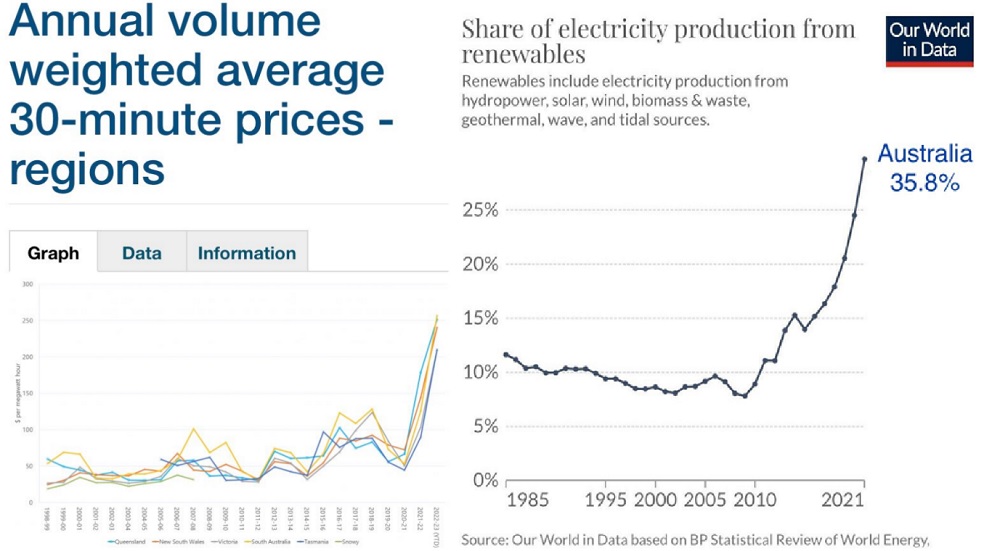
If renewables are so abundant and cheap, why are renewables unable to halt, or even slow, the increase in our cost of electricity? One would expect a cheaper source to result in a cheaper product. Let’s look at the facts.
Wind and solar rarely set the wholesale price.
The highest-priced generator dispatched by the market operator sets a regional wholesale clearing price every five minutes.
Wind and solar – almost exclusively sold on long-term contracts at a fixed price – offer their output to the market at -$900-ish to ensure being dispatched, and very rarely set the wholesale price.
Coal, with the largest market share, sets the price most often and at relatively low price points. Gas and hydro set the price less often than coal, but at far higher prices.
Electricity bills are more than just the wholesale price.
As consumers we are a long way downstream from the generators – nobody has a cable straight into a power station. We are connected by a network of transformers, substations, transmission lines, more substations and transformers, distribution powerlines, pad mounts, poles and wires, underground cables, pits, pillars, meters, meter readers, and retailers. The income that pays for all these components to be built and maintained is sourced from our electricity bills.
The ACCC describes the average retail electricity bill as roughly 30 per cent wholesale and 70 per cent ‘the rest’.
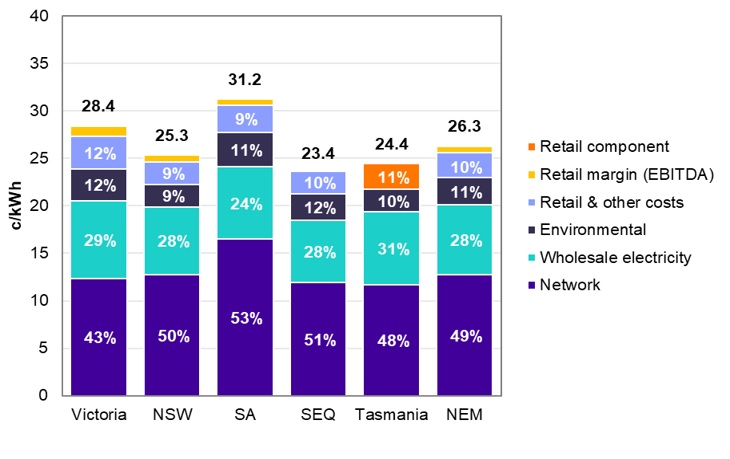
Source: ACCC 2022
Wind and solar can occasionally reduce the 30 per cent wholesale price, but can it reduce the remaining 70 per cent? The short answer is that it can’t. It actually increases it, pushing up the overall cost of supplying electricity.
Examples are easy to find. The federal government is at least doubling the cost of the transmission network. The Palaszczuk government promised $62 billion to close Queensland’s coal-fired power stations, with a good portion of that allocated to new transmission lines. Matt Kean promised the earth – or at least all the New South Wales land required to build new transmission for renewable energy zones – REZ. The Victorian government continues with reverse auctions and is reinstating the state-owned electricity bureaucracy. All this on top of billions spent on white elephant projects such as EnergyConnect (NSW to SA), MarinusLink (VIC to TAS), and HumeLink (Snowy 2 to NSW), that all must be recovered through electricity bills.
In addition to massive new spending on large projects, rooftop solar (heavily subsidised) adds ongoing costs to the large distribution networks in the form of managing excessive voltages, reverse power flows, and equipment upgrades. These costs have nothing to do with the cost of generation or wholesale price.
Renewable advocates slightly more evolved than the ‘fossil fuel screamers’ argue that wind and solar displace more expensive generation. They claim the merit order curve then causes cheaper generation to set the price more often, resulting in lower overall wholesale prices (note, the focus on wholesale prices and not actual bills).
Unfortunately, for those of us who pay an electricity bill from our meagre after-tax dollars, there are holes in this theory too.
- Solar only works during the day, excluding the afternoon peak, and both wind and solar only work when the weather allows. Capacity factor of large-scale solar in Australia hovers around 25 per cent and wind at 30 per cent. That’s a lot of five-minute periods where wind and solar have no effect at all.
- Intermittency and lack of inertia increases the cost of balancing grid frequency. More intermittency means more gaps needing to be filled by expensive gas and hydro.
- Retailers hedge their wholesale purchases, accounting for price volatility while ensuring they have enough capacity to supply their customers. Hedging adds costs.
My criticisms of renewables and their life-support policies do not make me a fossil fuel shill with a desire to see the world burn. I just want to see Australians benefit from the lowest cost and highest security electricity system. That is the best outcome for us all.
The simple fact is wind and solar do not reduce the 30 per cent wholesale price component of the bill. Perversely, wind and solar increase the costs of the other 70 per cent. The combined effect of renewables is to increase the overall cost of electricity bills.
Over to you Mr Bowen.
Ben is an electrical engineer in the power and gas sector.
Got something to add? Join the discussion and comment below.
Get 10 issues for just $10
Subscribe to The Spectator Australia today for the next 10 magazine issues, plus full online access, for just $10.

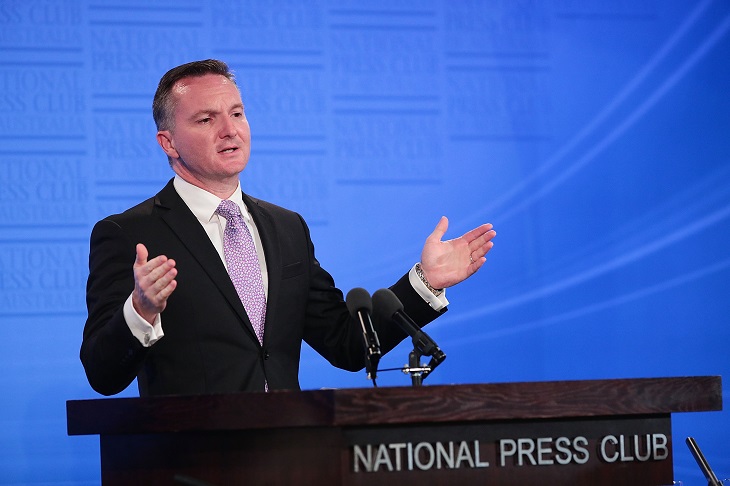
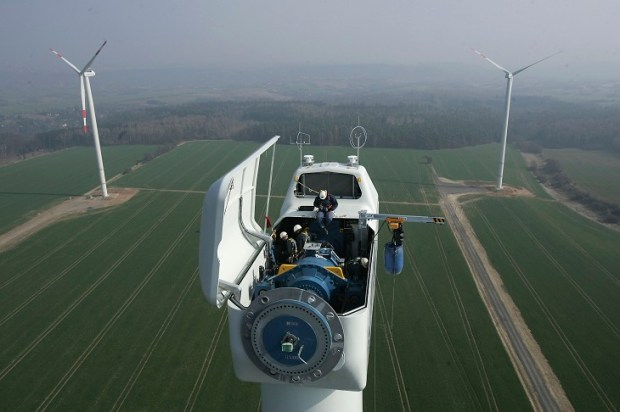
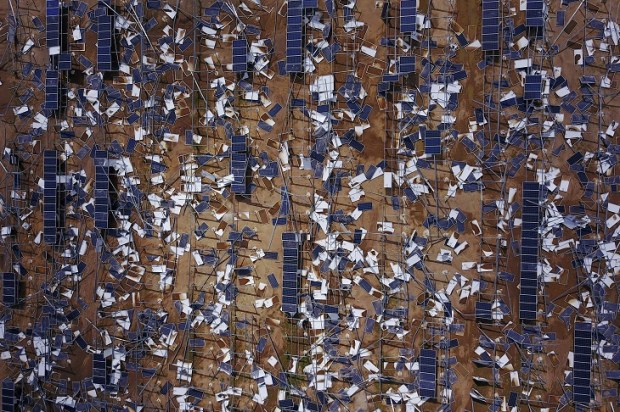


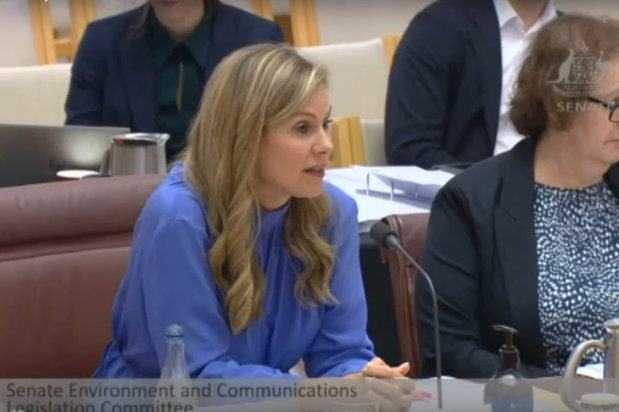



















Comments
Don't miss out
Join the conversation with other Spectator Australia readers. Subscribe to leave a comment.
SUBSCRIBEAlready a subscriber? Log in